Derek Cohen (Perth Oz)
Established Member
With the chairs done, next on the agenda is an 8-seater dining table. One of the pleasures in being an amateur is that I get to enjoy the time between builds as much as the builds themselves. My question for all is "what do you do between builds, or in preparation for a new build?".
The table top is to be 68-70" long, 40" wide, and 1 1/4" thick (there will be a 1/4" bevel), in Rock Maple. The Rock Maple is to link with the chairs I built. The legs will be 3" cylinders in Jarrah, 30" high, with 3" Jarrah stretchers connecting. Think of this as a contemporary version of the existing 6-seater 250 year-old table we are replacing (which has 5" stretchers and 2 1/2" diameter legs) ...
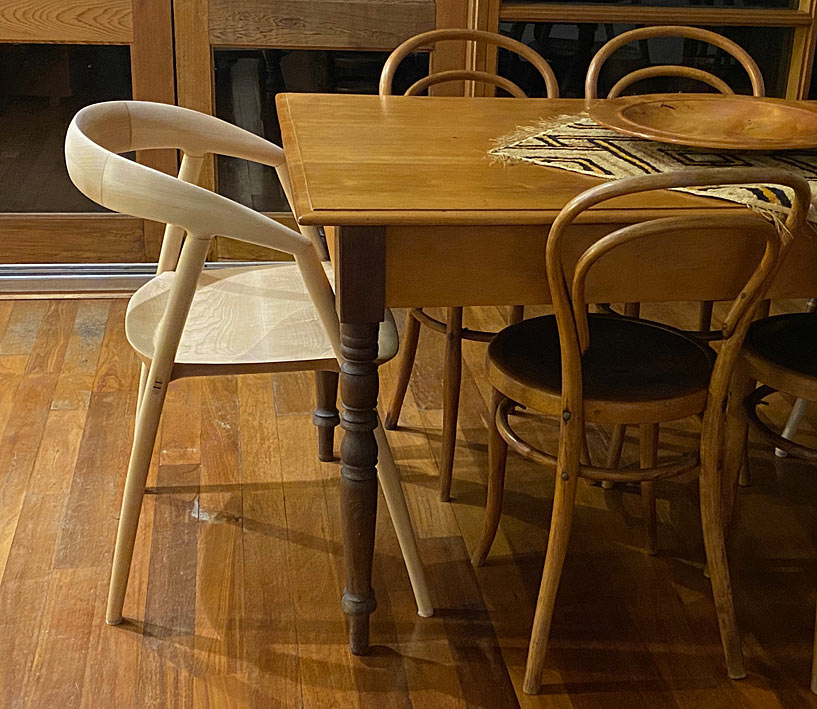
But this post is not about design. That is for another time. This post is about prepping.
The Jarrah legs come in 3 1/2" posts, in around 80" lengths. They were cut down roughly, at this stage, with a chainsaw ...
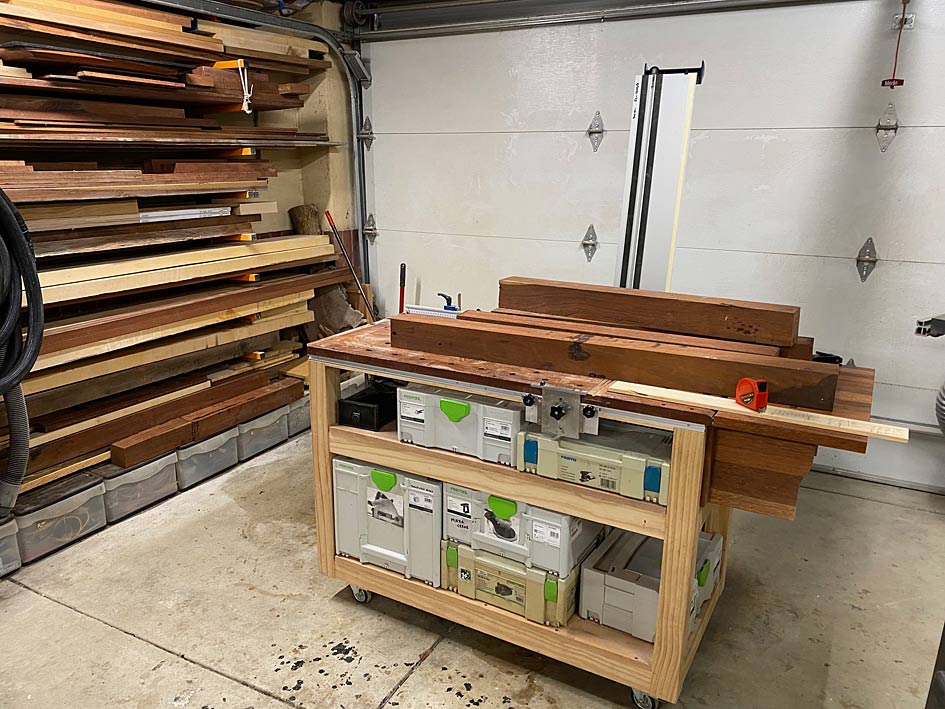
There are 4 wide 10' long and 2" thick Rock Maple boards here. They will be cut down and re-sawn when ready to be used.

I spent most of the past weekend cleaning the workshop. It was covered in dust from the grinding, sanding, scraping, rasping and shaving that dominated my time over the past few months. The jointer-thickness/planer was cleaned, as was the slider, while the bandsaw was stripped, cleaned and a carbide Lenox Woodmaster CT 1" blade set up for resawing. All this wood is damned hard stuff. The dust extractor bins were emptied, and the ceiling filter cleaned.
There is some pleasure in making all good again, especially with a good coffee to sip, and great jazz to listen to on the workshop stereo.
While the machines are important, attention was given to the hand planes I will use. Especially the Veritas #7 Custom Jointer - as good as my Hammer A3-31 jointer is, all edges are finished with a hand plane for invisible joins.
Stripping down the #7, it was clear that it needed a good cleaning.
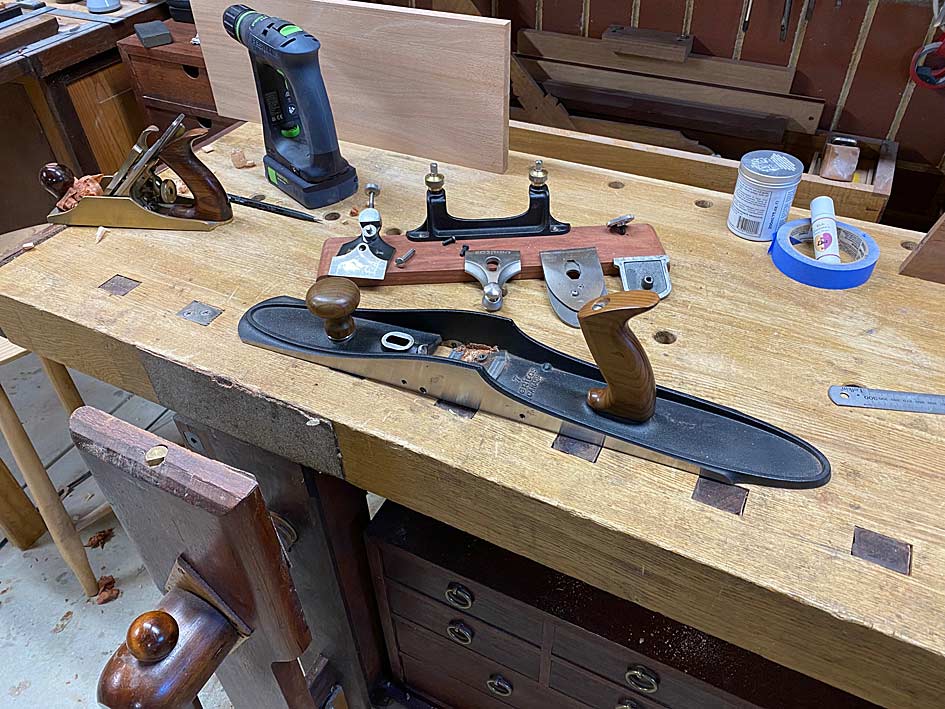
It's amazing to find this much cr@p under the frog ...
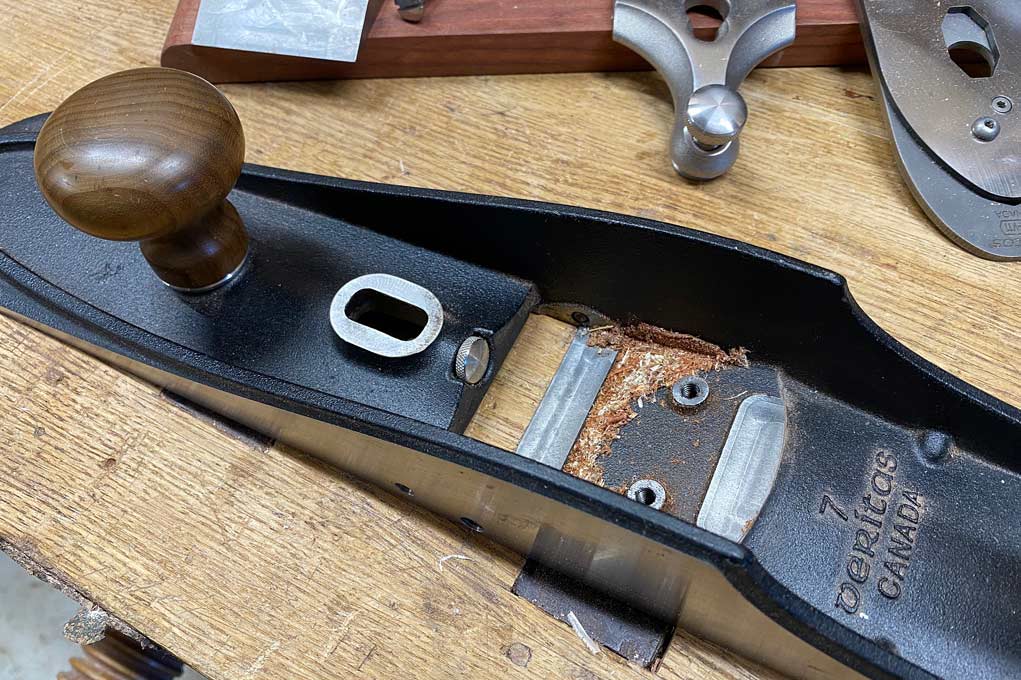
That warranted refreshing the underside of the chipbreaker. You can make out the silver line behind its leading edge ...
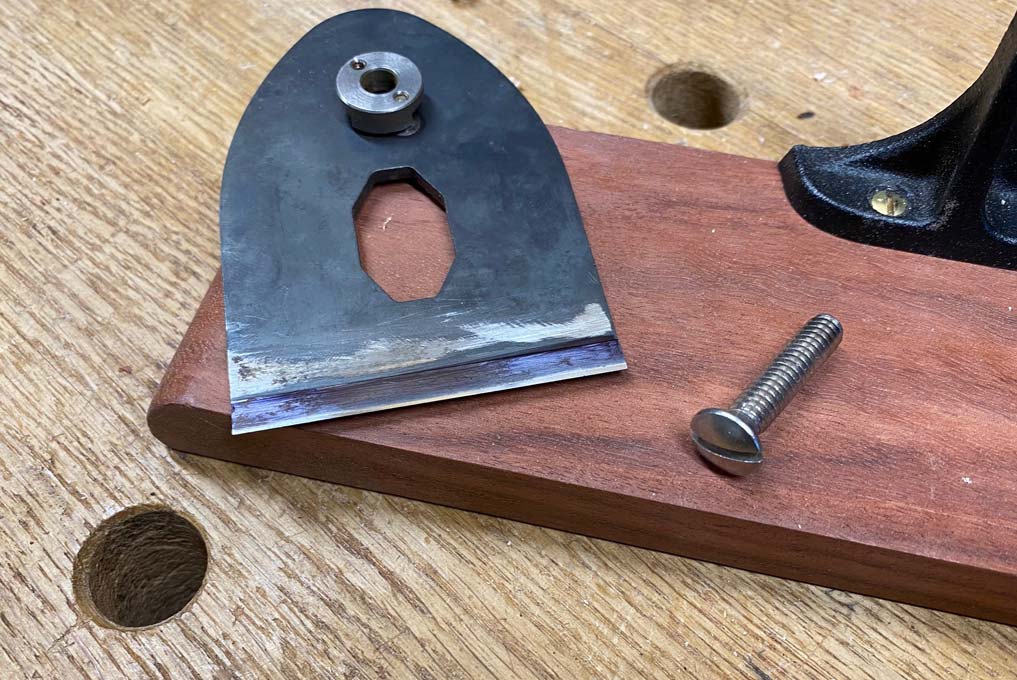
The blade was sharpened (30 degrees) and set up with the chipbreaker closed down - the last thing one wants when planing edges is any tearout ...
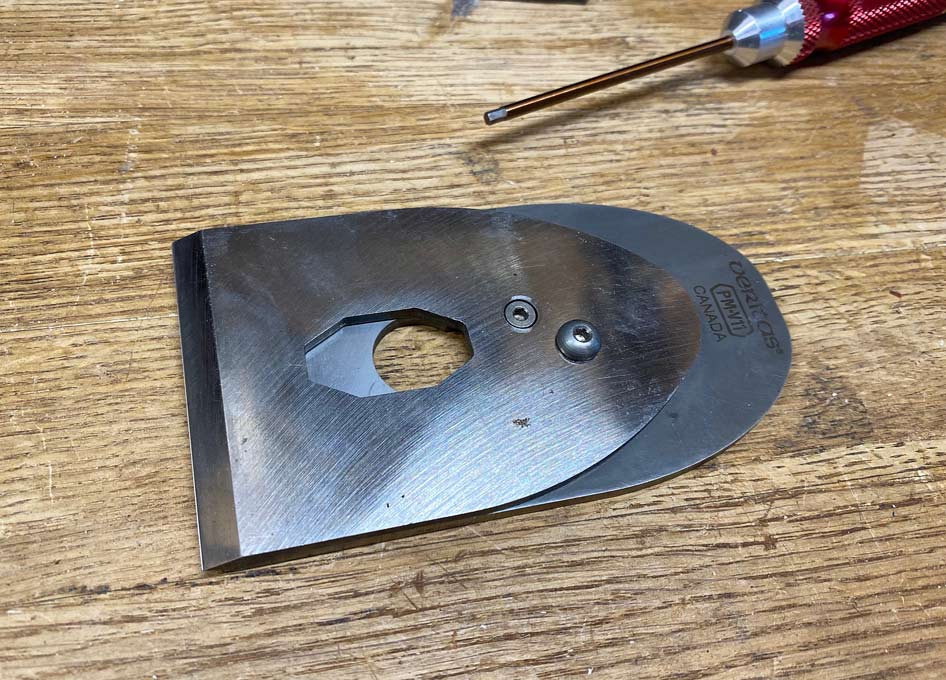
The chipbreaker received a clean microbevel of 75 degrees. The wooden angle behing provides a guide for freehanding this ...
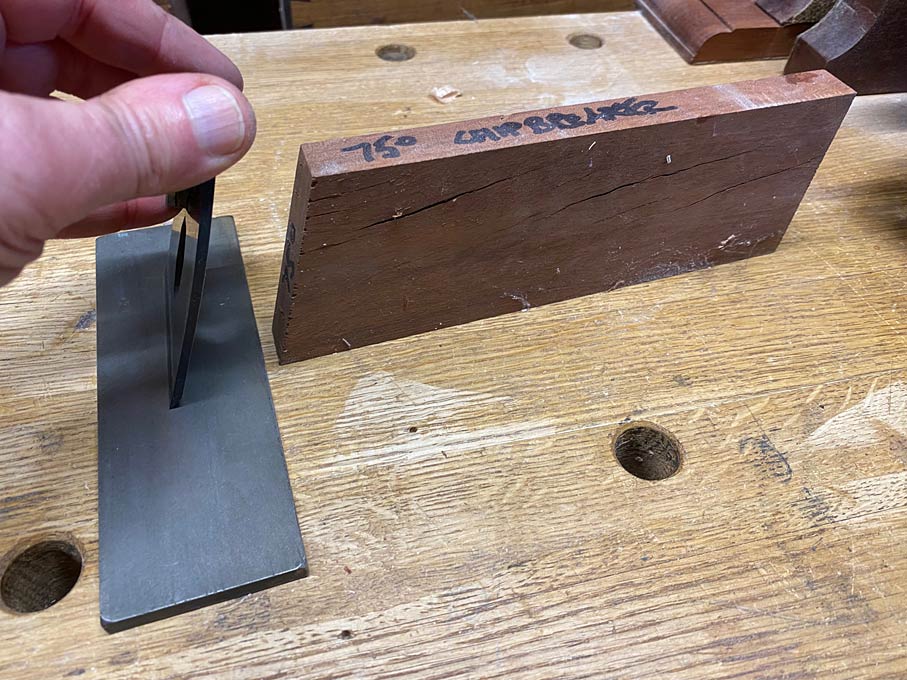
Re-assembled and looking like new! Incidentally, the frog angle here is 40 degrees (that is about as low as one can go), hence how important it is to set the chipbreaker carefully as it would otherwise be a recipe for disaster.
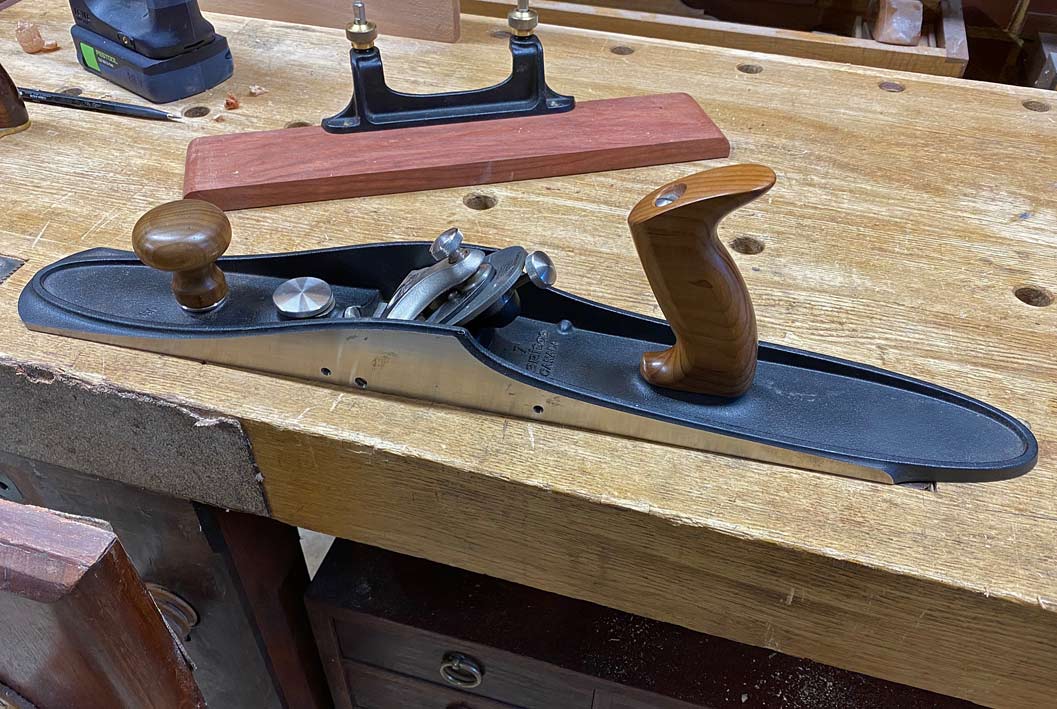
Testing on a narrow board ...
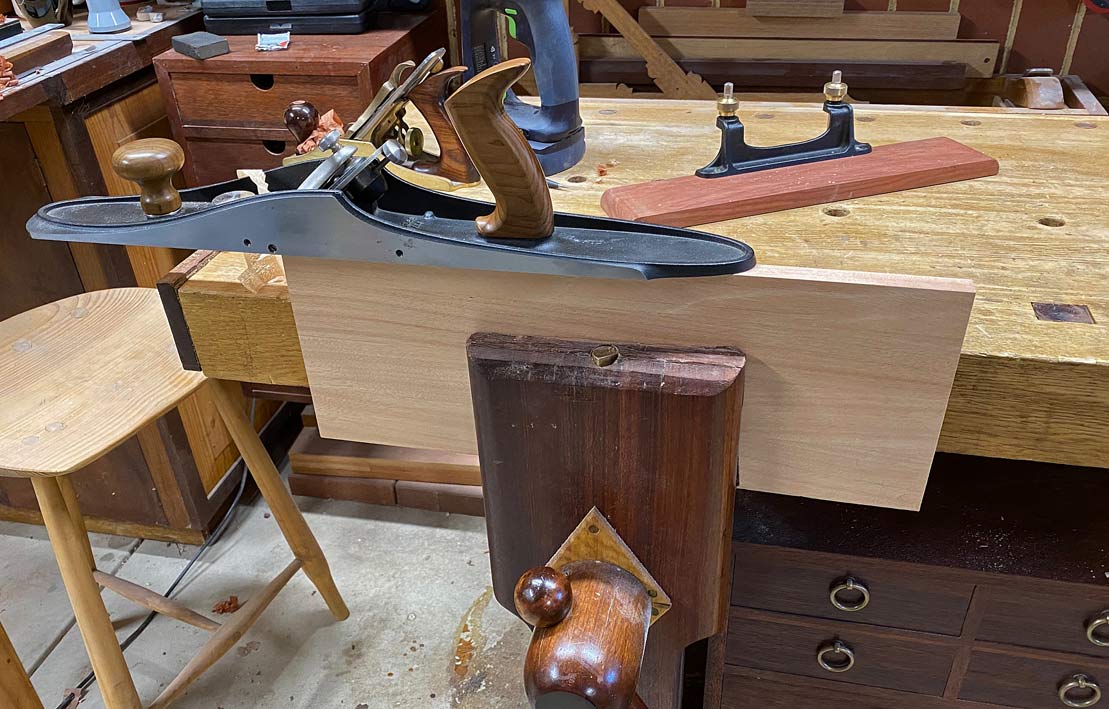
The even, thin shavings let me know that it is good to go ...
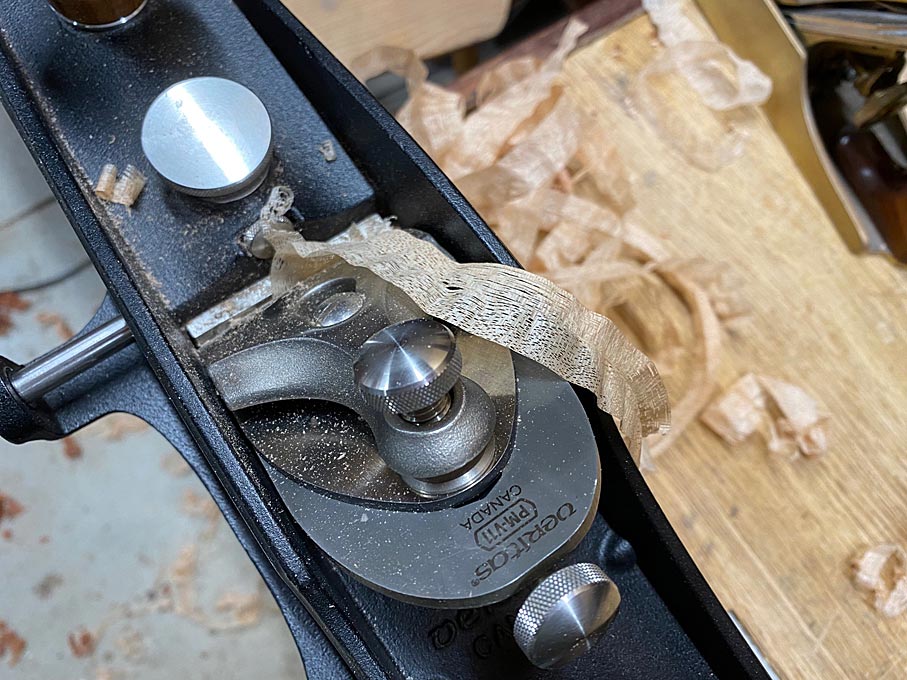
I also took the time to make a side fence for the #7. I've never used one before on this plane, and was curious to find out how accurate (square) it could plane (it leaves a perfect edge). The metal bits come from a Veritas Skew Rabbet Plane ...
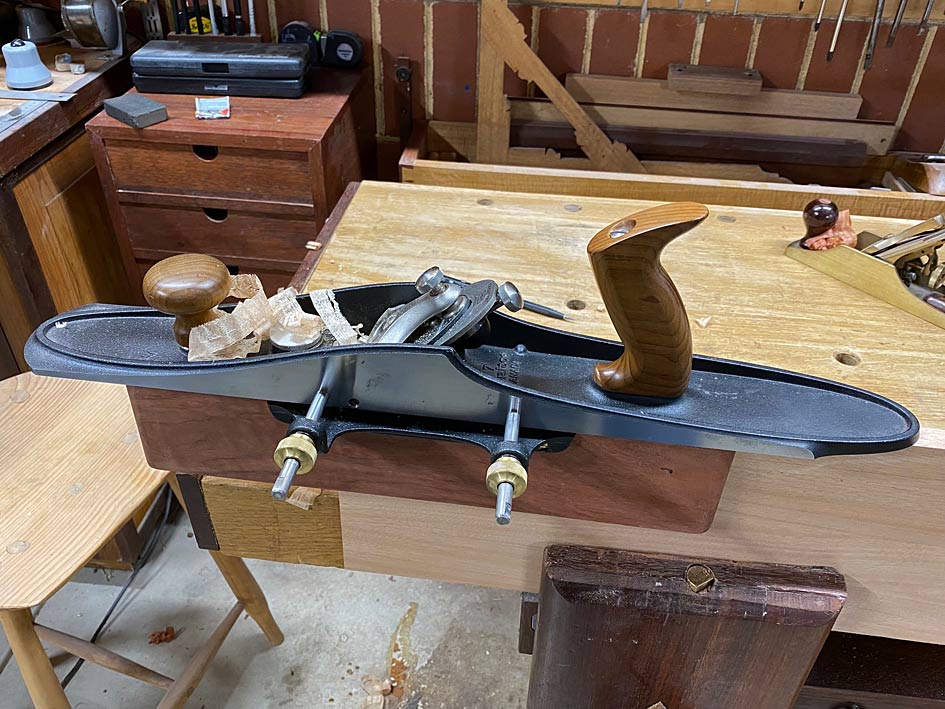
And then this was rinse and repeat for a #4 Veritas Custom Smoother ...
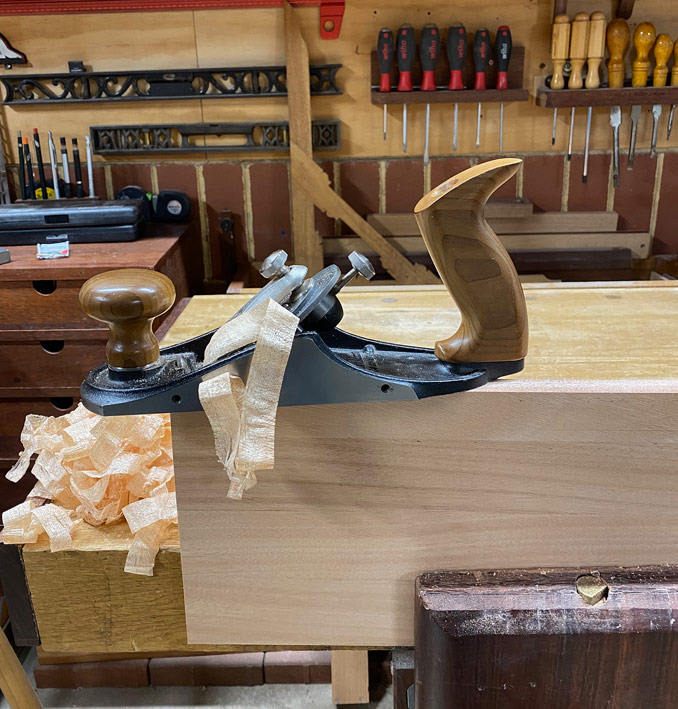
.. and a LN #3 ...
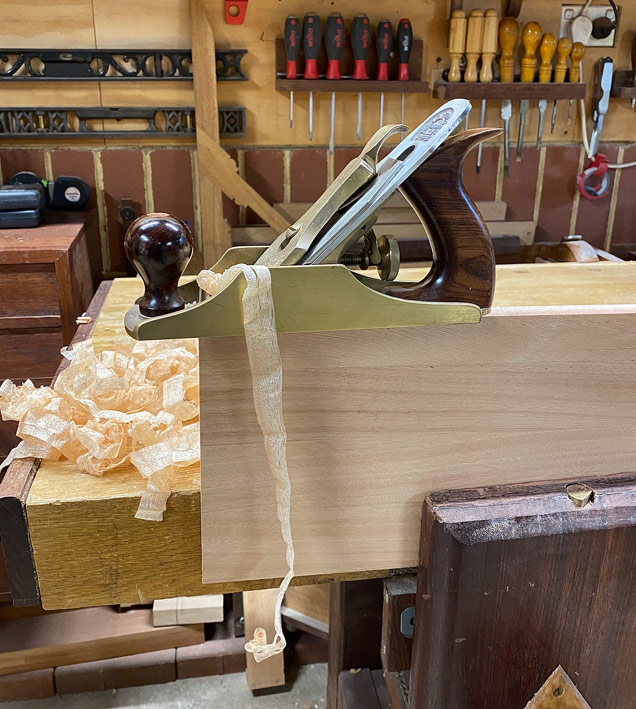
That was fun ...
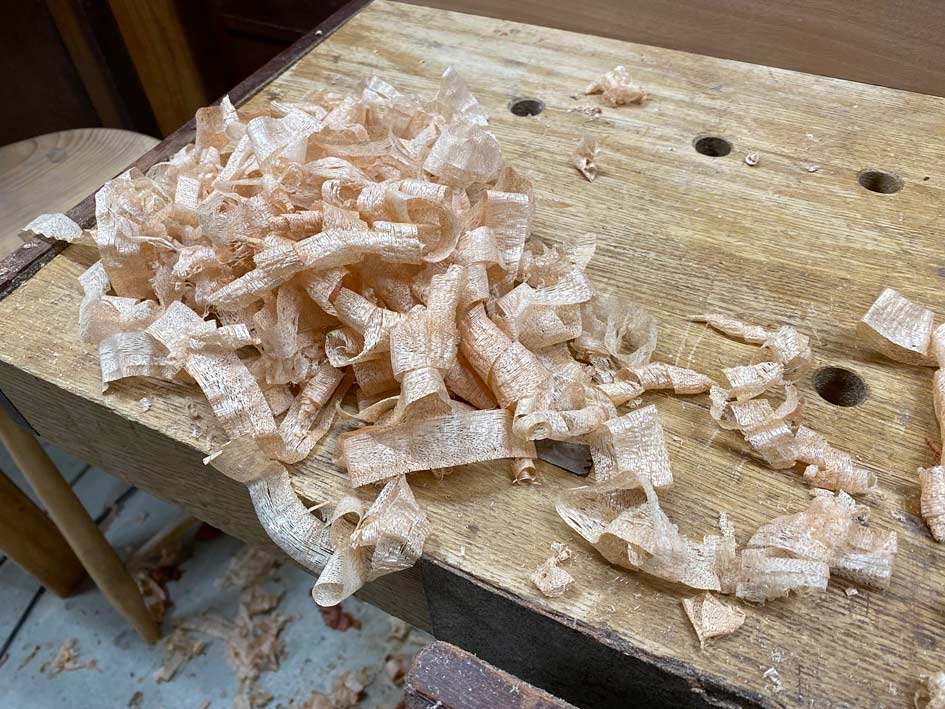
Regards from Perth
Derek
The table top is to be 68-70" long, 40" wide, and 1 1/4" thick (there will be a 1/4" bevel), in Rock Maple. The Rock Maple is to link with the chairs I built. The legs will be 3" cylinders in Jarrah, 30" high, with 3" Jarrah stretchers connecting. Think of this as a contemporary version of the existing 6-seater 250 year-old table we are replacing (which has 5" stretchers and 2 1/2" diameter legs) ...

But this post is not about design. That is for another time. This post is about prepping.
The Jarrah legs come in 3 1/2" posts, in around 80" lengths. They were cut down roughly, at this stage, with a chainsaw ...

There are 4 wide 10' long and 2" thick Rock Maple boards here. They will be cut down and re-sawn when ready to be used.

I spent most of the past weekend cleaning the workshop. It was covered in dust from the grinding, sanding, scraping, rasping and shaving that dominated my time over the past few months. The jointer-thickness/planer was cleaned, as was the slider, while the bandsaw was stripped, cleaned and a carbide Lenox Woodmaster CT 1" blade set up for resawing. All this wood is damned hard stuff. The dust extractor bins were emptied, and the ceiling filter cleaned.
There is some pleasure in making all good again, especially with a good coffee to sip, and great jazz to listen to on the workshop stereo.
While the machines are important, attention was given to the hand planes I will use. Especially the Veritas #7 Custom Jointer - as good as my Hammer A3-31 jointer is, all edges are finished with a hand plane for invisible joins.
Stripping down the #7, it was clear that it needed a good cleaning.

It's amazing to find this much cr@p under the frog ...

That warranted refreshing the underside of the chipbreaker. You can make out the silver line behind its leading edge ...

The blade was sharpened (30 degrees) and set up with the chipbreaker closed down - the last thing one wants when planing edges is any tearout ...

The chipbreaker received a clean microbevel of 75 degrees. The wooden angle behing provides a guide for freehanding this ...

Re-assembled and looking like new! Incidentally, the frog angle here is 40 degrees (that is about as low as one can go), hence how important it is to set the chipbreaker carefully as it would otherwise be a recipe for disaster.

Testing on a narrow board ...

The even, thin shavings let me know that it is good to go ...

I also took the time to make a side fence for the #7. I've never used one before on this plane, and was curious to find out how accurate (square) it could plane (it leaves a perfect edge). The metal bits come from a Veritas Skew Rabbet Plane ...

And then this was rinse and repeat for a #4 Veritas Custom Smoother ...

.. and a LN #3 ...

That was fun ...

Regards from Perth
Derek
































